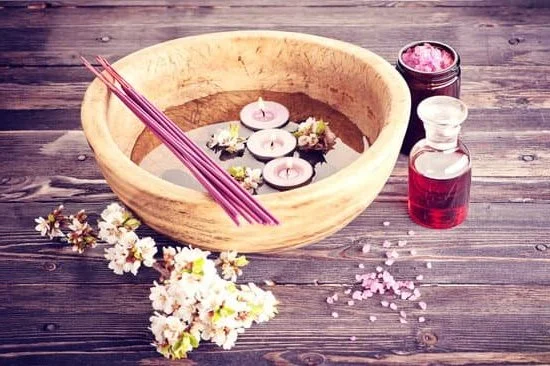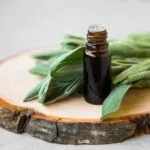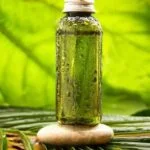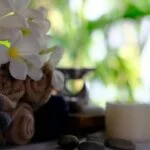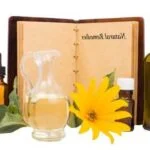An aromatherapy diffuser is a device that allows you to enjoy the therapeutic benefits of essential oils by dispersing their aromatic molecules into the air. It is an effective and convenient way to create a relaxing and pleasant atmosphere in your home or workspace. Whether you are looking to enhance your mood, promote better sleep, or improve your overall well-being, using an aromatherapy diffuser can be a wonderful addition to your self-care routine.
Aromatherapy diffusers come in various types, each with their own unique features and benefits. Ultrasonic diffusers use water and ultrasonic vibrations to create a fine mist of essential oil particles that are released into the air.
Nebulizing diffusers work without water and deliver undiluted essential oils directly into the air, providing a more potent aroma. Heat diffusers use heat to gently release the fragrance of the essential oils, while evaporative diffusers rely on airflow to evaporate the oils and disperse their scent.
To choose the right aromatherapy diffuser for your needs, it is important to consider factors such as room size, preferred method of diffusion, noise level, and budget. Each type of diffuser has its own pros and cons in terms of efficiency, coverage area, maintenance requirements, and overall user experience. By understanding these differences, you can make an informed decision when selecting a diffuser that best suits your preferences.
Using an aromatherapy diffuser is not only simple but also highly enjoyable. Once you have chosen the right type of diffuser for you, all it takes is adding water (if required), placing a few drops of your favorite essential oil or blend onto the designated area or tray, adjusting settings if applicable, and letting the aromatic mist permeate your environment.
In this article, we will explore different types of aromatherapy diffusers in detail, how to properly set up and use them for maximum effectiveness, as well as important safety precautions to keep in mind. Get ready to embark on a fragrant journey of well-being and relaxation with the help of an aromatherapy diffuser.
Types of aromatherapy diffusers
There are several types of aromatherapy diffusers available in the market, each with its own unique features and benefits. The four main types of diffusers are ultrasonic, nebulizing, heat, and evaporative diffusers.
Ultrasonic diffusers are one of the most popular options. They use ultrasonic vibrations to disperse a fine mist of water and essential oils into the air. The mist is created by breaking down the essential oils into tiny particles, which are then released into the air with water vapor. Ultrasonic diffusers are known for their quiet operation and ability to cover larger areas. However, they do require regular cleaning to prevent any buildup or residue.
Nebulizing diffusers work by using pressurized air to atomize essential oils into a fine mist that is dispersed into the room. These diffusers do not require any water or heat and maintain the purity and therapeutic properties of the essential oils. Nebulizing diffusers are often preferred by those who want a strong and concentrated aroma. However, they may be noisier compared to other types of diffusers.
Heat diffusers utilize heat to gently warm the essential oils and release their aroma into the air. They typically use a small dish or tray where you place a few drops of your chosen essential oil. The heat causes the oil to evaporate slowly, filling the room with fragrance. Heat diffusers are easy to use but may alter some of the therapeutic properties of certain essential oils due to high temperatures.
Evaporative diffusers work by allowing air to naturally evaporate essential oils from a pad or filter directly into the surroundings. These diffusers typically have a fan or ventilation system that helps distribute the aromatic molecules throughout the space. Evaporative diffusers are relatively simple to operate, but because they rely on airflow, they may diffuse oils more quickly than other types.
When choosing an aromatherapy diffuser, it is important to consider factors such as room size, personal preferences, and specific needs. Ultrasonic diffusers are great for larger spaces, nebulizing diffusers provide a concentrated aroma, heat diffusers are simple and gentle, while evaporative diffusers work well in smaller rooms or on the go. By understanding the different types of diffusers available, you can choose the one that best suits your needs and enjoy the benefits of aromatherapy in your own home.
Essential oils for aromatherapy
Essential oils play a crucial role in aromatherapy, as they are the main component used in an aromatherapy diffuser. These oils are derived from various plants and have unique scents and therapeutic properties. When used with a diffuser, essential oils can provide a wide range of benefits for both the mind and body.
Popular essential oils to use with an aromatherapy diffuser include lavender, peppermint, eucalyptus, lemon, and tea tree oil. Lavender is well-known for its calming and relaxing properties, making it ideal for promoting better sleep and reducing stress. Peppermint has invigorating properties that can help improve focus and concentration.
Eucalyptus is commonly used to clear the respiratory system and relieve congestion. Lemon is uplifting and energizing, while also having antibacterial properties. Tea tree oil is often used for its cleansing and purifying effects.
Each essential oil has its own unique benefits and properties. Lavender promotes relaxation, reduces anxiety, and may even help alleviate headaches. Peppermint can help with digestion issues, ease nausea, and soothe sore muscles.
Eucalyptus has antimicrobial properties that can support respiratory health during seasonal allergies or colds. Lemon uplifts mood and aids in detoxification of the body due to its antioxidant properties. Tea tree oil is known for its antiseptic qualities as well as being beneficial for skin conditions like acne or fungal infections.
When using essential oils with your diffuser, it’s important to follow safety guidelines such as diluting oils properly before use if necessary, not ingesting them orally unless under professional guidance, keeping them out of reach of children or pets who may be sensitive to certain scents or prone to allergic reactions. It’s always recommended to perform a patch test on your skin before applying any new oil directly to avoid any adverse reactions or irritations.
Overall, using essential oils with an aromatherapy diffuser can provide numerous benefits for your overall well-being. Whether you’re looking to relax and unwind, boost your mood, or promote better sleep, there are various essential oils that can meet your specific needs. Experimenting with different oils and blends can help you discover what works best for you and enhance your aromatherapy experience.
Preparing your aromatherapy diffuser
Properly preparing your aromatherapy diffuser is crucial to ensure that it functions effectively and provides you with the desired benefits. Here is a step-by-step guide on how to set up and prepare your diffuser:
- Choose the right location: Select a stable surface near an electrical outlet or a space in your home where you spend a lot of time. Make sure the diffuser is placed on a level surface to prevent any accidental spills.
- Add water: Most diffusers require water as the base to disperse the essential oils into the air. Fill the reservoir of your diffuser with clean water, ensuring that you do not exceed the maximum fill line indicated by the manufacturer.
- Add essential oils: Depending on the size of your diffuser, add 3-10 drops of your preferred essential oil or an aroma blend to the water in the reservoir. Be cautious not to add too much oil as it may overpower the scent and could potentially clog or damage the diffuser.
- Optional settings: Some diffusers come with additional features such as adjustable mist levels, timers, or LED lighting options. Adjust these settings according to your preferences or follow the instructions provided by the manufacturer.
- Safety precautions: Before turning on your diffuser, always review safety precautions provided by the manufacturer. Make sure all cords are properly connected, and there are no loose parts that could pose a hazard.
Proper cleaning and maintenance of your aromatherapy diffuser are also important for optimal functioning and longevity. Here are some guidelines:
- Regular cleaning: It is recommended to clean your diffuser after each use or at least every few days if used continuously. Follow specific cleaning instructions provided by the manufacturer but generally, you can rinse out any remaining water and essential oil residue from inside the reservoir using warm water and mild dish soap.
- Cleaning methods for different types of diffusers: Depending on the type of diffuser you are using, there may be specific cleaning instructions. For ultrasonic diffusers, use a cotton swab and rubbing alcohol to gently clean the ultrasonic chip or ceramic disc. Nebulizing diffusers can be wiped with a clean cloth saturated in rubbing alcohol. Heat and evaporative diffusers tend to require less maintenance but wiping down the surfaces with a damp cloth regularly is still recommended.
By following these steps for preparing and maintaining your aromatherapy diffuser, you can ensure that it operates efficiently and provides you with the desired aromatic experience.
Using an aromatherapy diffuser
One popular type of aromatherapy diffuser is the ultrasonic diffuser. To use an ultrasonic diffuser, start by filling the water reservoir with clean water up to the fill line. Add a few drops of your chosen essential oil or blend into the water.
Close the lid securely and select your preferred settings such as mist intensity and timer. Press the power button to turn on the diffuser, and within minutes, you will start experiencing the aromatic benefits as a fine mist is released into the air.
Another type of diffuser is the nebulizing diffuser. This type doesn’t require water but instead uses pressurized air or a small pump to atomize the essential oils into tiny particles that are released into the air. To use a nebulizing diffuser, simply attach the essential oil bottle directly to the device and adjust the settings according to your preference. This method offers stronger aroma diffusion compared to other types of diffusers.
Heat diffusers work by gently heating essential oils to release their fragrance into the atmosphere. These usually come in two forms: electric heat diffusers and candle heat diffusers. With electric heat diffusers, simply place a few drops of essential oil onto the pad or plate provided and switch on the device.
The warmth from these devices slowly evaporates the oil creating a pleasant aroma in your space. Candle heat diffusers require you to place a small amount of water mixed with essential oils on top of a candle holder where it will slowly heat up.
Lastly, evaporative diffusers are a portable and simple option that relies on air flow to disperse essential oils. These diffusers usually have a small fan that blows air through an absorbent material such as a pad or wick onto which a few drops of essential oil are applied. The air blows across the pad causing the oil to evaporate and create an aromatic atmosphere wherever you place the device.
In order to get the most out of your aromatherapy diffuser, it is important to follow a few tips. Firstly, consider the size of your space when choosing a diffuser. Larger areas will require diffusers with greater coverage and mist output, while smaller spaces may only need compact or personal-sized diffusers.
Additionally, it’s recommended to use pure essential oils without any additives or synthetic fragrances for optimal results. Experiment with different essential oil combinations and recipes to create personalized blends that suit your needs and preferences.
Remember to always follow safety precautions when using any type of aromatherapy diffuser. Keep your diffuser out of reach from children and pets, avoid using highly concentrated oils for long periods of time, and always read and follow the instructions provided by the manufacturer. By using an aromatherapy diffuser properly and safely, you can enhance your well-being and enjoy the multitude of benefits that come with aromatherapy.
Safety precautions
When using an aromatherapy diffuser, it is important to keep in mind some safety precautions to ensure a safe and enjoyable experience. Here are some guidelines and recommendations to follow:
- Read the instructions: Before using your diffuser, make sure to carefully read and understand the instructions provided by the manufacturer. Different diffusers may have specific guidelines for usage, cleaning, and maintenance.
- Dilute essential oils properly: Essential oils are highly concentrated substances and should always be diluted before being used in a diffuser. Most diffusers require a few drops of essential oil mixed with water or a carrier oil. Follow the recommended dilution ratios provided by the manufacturer or consult a reputable source for guidelines.
- Use high-quality essential oils: It is important to use pure and high-quality essential oils for aromatherapy purposes. Avoid synthetic fragrances or adulterated oils, as they may not provide the desired therapeutic benefits and could potentially cause adverse reactions.
- Keep out of reach of children and pets: Aromatherapy diffusers should be placed in an area where children and pets cannot easily access them. Some essential oils can be toxic if ingested, so it is crucial to prevent accidental ingestion.
- Avoid prolonged exposure: While aromatherapy can offer numerous benefits, it is recommended to avoid prolonged exposure to diffused essential oils. Continuous and excessive inhalation of certain oils may cause sensitivities or respiratory issues in some individuals.
- Ventilate the room: To prevent overpowering scents or potential sensitivities, it is beneficial to have proper ventilation in the room where the diffuser is used. Opening windows or doors can help fresh air circulate throughout the space.
- Take breaks: It is wise to take regular breaks from using your aromatherapy diffuser, especially if you have been exposed to it for an extended period of time. This allows your body time to process and adjust to the aroma.
By following these safety precautions, you can enjoy the benefits of aromatherapy with peace of mind. Remember that everyone’s sensitivity to essential oils may vary, so it is important to listen to your body and adjust usage accordingly.
Creating personalized aromatherapy blends
How to mix and match essential oils
Mixing and matching essential oils can be a fun and creative process. When creating a blend, start by selecting oils that complement each other in terms of their aroma and properties. Consider the desired effect you want to achieve – for example, if you want to create a calming blend, choose oils known for their relaxing properties such as lavender, chamomile, or bergamot.
To create your personalized blend, combine 3-5 drops of each essential oil in a glass bottle. Gently swirl the bottle to mix the oils together. Remember to label your blend so that you can easily identify it later.
Blending tips and techniques
When blending essential oils, it’s important to consider their top, middle, and base notes. Top notes are light and evaporate quickly; they provide the initial scent when you first smell the blend. Middle notes are more balanced and appear after the top notes have evaporated. Base notes are rich and grounding; they linger on the skin for longer periods of time.
To create a well-balanced blend, aim for a combination of top, middle, and base note oils. Start with 30% top note oil, 50% middle note oil, and 20% base note oil. Adjust the ratios depending on your personal preference or desired aroma intensity.
Popular aromatherapy recipes to try with your diffuser
Here are some popular aromatherapy recipes to try with your diffuser:
- Relaxing blend: Combine 3 drops of lavender (top note), 4 drops of chamomile (middle note), and 2 drops of sandalwood (base note).
- Energizing blend: Combine 3 drops of lemon (top note), 3 drops of peppermint (middle note), and 4 drops of rosemary (base note).
- Focus blend: Combine 2 drops of grapefruit (top note), 4 drops of rosemary (middle note), and 3 drops of frankincense (base note).
Experiment with different combinations until you find the perfect blend that suits your needs and preferences. Enjoy the benefits of personalized aromatherapy blends by using them in your aromatherapy diffuser for a delightful sensory experience.
By creating personalized aromatherapy blends, you can truly tailor your aromatherapy experience to address specific concerns or promote certain emotions. Whether you are seeking relaxation, mental clarity, or an energy boost, experimenting with different essential oil combinations allows you to explore the vast world of aromatherapy and discover what works best for you.
Benefits of using an aromatherapy diffuser
Improved Mood and Relaxation
One of the primary benefits of using an aromatherapy diffuser is its ability to enhance mood and promote relaxation. Certain essential oils, such as lavender, chamomile, and bergamot, have been found to have calming properties that can help reduce stress and anxiety. When these oils are dispersed into the air through a diffuser, they create a soothing atmosphere that can instantly uplift your mood and provide a sense of tranquility.
In addition to their calming effects, some essential oils also have mood-boosting properties. For example, citrus oils like lemon and orange are known for their energizing and uplifting qualities. The fresh, invigorating scent of these oils can help improve focus and concentration while also promoting feelings of happiness and positivity.
Enhanced Sleep and Stress Relief
Using an aromatherapy diffuser before bedtime can greatly enhance your sleep quality and promote relaxation. Essential oils such as lavender, chamomile, and cedarwood are well-known for their sedative effects on the nervous system, helping to induce a state of deep relaxation that allows for better sleep.
Diffusing these oils in your bedroom or placing the diffuser near your bedside table creates a calming environment that promotes a restful night’s sleep. The gentle aroma helps to calm a racing mind, reduce anxiety levels, and improve overall sleep quality. Additionally, using an aromatherapy diffuser in the evening can help you unwind after a long day, providing much-needed relief from stress and tension.
Boosted Immunity and Respiratory Health
Certain essential oils used with an aromatherapy diffuser have powerful antibacterial, antiviral, and antifungal properties that can support overall immune function. Oils like eucalyptus, tea tree, peppermint, and oregano act as natural immune boosters, helping to strengthen the body’s defense against pathogens.
When diffused into the air, these oils can help purify the surrounding environment by eliminating harmful airborne bacteria and viruses. This is especially beneficial during cold and flu seasons or when you’re feeling under the weather. In addition, using an aromatherapy diffuser can also provide relief from respiratory conditions such as congestion, sinusitis, and allergies. Inhalation of essential oil particles can effectively clear nasal passages, reduce inflammation, and promote easier breathing.
Overall, using an aromatherapy diffuser offers a multitude of benefits for your well-being. From improved mood and relaxation to enhanced sleep and respiratory health, incorporating aromatherapy into your daily routine can have a positive impact on your physical and emotional state. So why not give it a try and experience the transformative power of essential oils with an aromatherapy diffuser?
Conclusion
In conclusion, using an aromatherapy diffuser is a wonderful way to enhance your overall well-being. Throughout this article, we have explored the different types of diffusers available in the market and how to choose the right one for your needs. We have also discussed the importance of using essential oils and their benefits, as well as provided step-by-step instructions on preparing and using your aromatherapy diffuser.
Not only can an aromatherapy diffuser improve your mood and help you relax, but it can also enhance sleep quality and relieve stress. Additionally, using a diffuser with specific essential oils can boost immunity and promote respiratory health. The potential benefits are vast, making it a valuable addition to any wellness routine.
We encourage you to give aromatherapy diffusion a try and experience the holistic benefits it can bring to your life. Whether you are looking to create personalized blends or simply want to enjoy the uplifting scents of essential oils in your space, an aromatherapy diffuser is a versatile tool that can support your overall well-being.
Incorporating an aromatherapy diffuser into your daily routine can be both enjoyable and beneficial for creating a peaceful environment at home or work. So why not indulge in this natural form of therapy? By using an aromatherapy diffuser, you open yourself up to the power of scent and its ability to influence your mind, body, and emotions. Embrace this simple yet effective tool for enhancing your well-being today.
Frequently Asked Questions
How many drops of essential oil do you put in a diffuser?
The number of drops of essential oil to put in a diffuser depends on the size of the diffuser and personal preference. Generally, it is recommended to add 3-5 drops of essential oil per 100ml of water in a diffuser.
However, if you have a larger diffuser or prefer a stronger scent, you can add a few more drops. It’s important not to overload the diffuser with too much essential oil as it can be overpowering and may also affect the performance of the diffuser.
How often to use aromatherapy diffuser?
The frequency of using an aromatherapy diffuser largely depends on individual needs and preferences. Aromatherapy can be used daily or on alternate days, depending on how frequently you want to experience its benefits.
Many people find that using an aromatherapy diffuser for around 15-30 minutes each time is sufficient to fill the room with a pleasant aroma and enjoy its therapeutic effects. However, if you are using specific essential oils for targeted purposes like relaxation or sleep aid, you may choose to use the diffuser more frequently during those times.
Do you put hot or cold water in a aroma diffuser?
It is generally recommended to use cold or room temperature water in an aromatherapy diffuser. Cold water helps preserve the integrity and potency of the essential oils being used in the diffusion process. Using hot water may compromise the quality of essential oils by altering their chemical composition or evaporating them too quickly.
Coldwater also allows for longer diffusion times as it takes more time for it to evaporate compared to hot water. Therefore, to ensure optimal results and prevent any potential damage to your essential oils, it’s advisable to use cold water when operating an aroma diffuser.

Are you looking for a natural way to improve your health and wellbeing?
If so, aromatherapy may be the answer for you.

